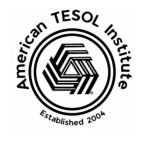The field of TESOL is constantly evolving, and teachers need tools that go beyond traditional methodologies to connect with students and improve learning outcomes. The American TESOL Institute has introduced cutting-edge strategies into its TESOL Advanced Certification, including Neuro-Linguistic Programming (NLP), psychology-based teaching principles, and graphology (the study of handwriting and penmanship). These innovative methods empower teachers to engage learners on deeper levels, unlocking their full potential in the ESL classroom.
Let’s explore these exciting new approaches and how they can transform your teaching of English to speakers of other languages.
1. Teaching with Neuro-Linguistic Programming (NLP): A Path to Effective Communication
Neuro-Linguistic Programming (NLP) is a psychological framework that explores the connection between neurological processes, language, and behavior. NLP offers techniques to better understand how students perceive and process information, allowing teachers to communicate more effectively and tailor lessons to individual needs.
How NLP Works in Teaching ESL:
- Visual, Auditory, Kinesthetic (VAK) Learning Styles: NLP helps teachers identify whether students learn best through visual cues (seeing), auditory instruction (hearing), or kinesthetic activities (doing). By tapping into these preferences, teachers can design engaging lessons that resonate with diverse learners.
- Example: Use visual aids like pictures or videos for visual learners, incorporate songs or chants for auditory learners, and role-playing for kinesthetic learners.
- Building Rapport: NLP emphasizes mirroring body language, tone, and speech patterns to build trust and rapport with students. This makes students feel more comfortable and understood in the classroom, reducing anxiety.
- Reframing Negative Mindsets: NLP techniques help students overcome self-doubt and language-learning fear. For instance, teachers can use positive affirmations like, “You’re improving every day,” to help learners view challenges as opportunities.
Practical NLP Activity:
- Language Anchoring: Connect vocabulary to physical movements or emotions. For example, when teaching the word “happy,” ask students to smile and associate the feeling with the word. This creates a lasting mental link, improving retention.
NLP bridges the gap between cognition and communication, helping students internalize English concepts faster while enhancing their confidence.
2. Teaching with Psychology: Understanding the Learner’s Mind
Incorporating psychological principles into the TESOL classroom allows teachers to address the emotional, cognitive, and social factors that influence language learning. By understanding how the brain works, teachers can enhance their instructional methods to support memory, motivation, and engagement.
Key Psychological Concepts for Teaching English:
- Motivation and Reward Systems: Using positive reinforcement (praise, rewards, or recognition) increases student motivation and participation. Creating achievable short-term goals gives learners a sense of accomplishment.
- Example: Use “star charts” for younger learners or verbal praise for teens and adults. Celebrate milestones like completing vocabulary challenges or mastering a grammar structure.
- The Zone of Proximal Development (ZPD): Coined by psychologist Lev Vygotsky, ZPD is the space between what a learner can do independently and what they can achieve with guidance. Teachers can use scaffolding techniques to provide support until students gain confidence.
- Example: In reading exercises, first model reading aloud, then guide students to read with you, and finally allow them to read independently.
- Memory Techniques: Leverage psychology-backed strategies like chunking (breaking information into smaller units), mnemonics, and spaced repetition to help students retain new vocabulary and grammar rules.
Practical Psychological Activity:
- Emotion-Based Storytelling: Tap into emotions to improve retention. Assign short stories with relatable, emotional content. For example, stories about friendship, adventure, or overcoming challenges engage the brain more deeply, helping students remember new words and phrases.
By teaching with psychology, TESOL educators create an environment that fosters motivation, reduces anxiety, and promotes lasting language acquisition.
3. Graphology and Penmanship: Unlocking Learning Styles Through Writing
Graphology is the study of handwriting and its connection to personality traits, learning styles, and cognitive processes. While often considered an art, graphology combined with penmanship offers practical insights into student behavior and language-learning preferences. In ESL classrooms, penmanship can also help students build foundational skills in English writing.
How Graphology Enhances ESL Teaching:
- Analyzing Handwriting for Insights: Handwriting can reveal whether students are methodical, creative, or detail-oriented learners. For example:
- Neat, well-formed handwriting suggests careful, organized thinking. These students may benefit from structured grammar exercises.
- Fast, looser handwriting may indicate creative tendencies. These students thrive in free-writing and storytelling tasks.
- Improving Fine Motor Skills: Teaching proper letter formation and cursive writing enhances coordination and focus, especially for younger learners. This, in turn, boosts confidence in writing English letters and words.
- Boosting Creativity with Penmanship: Encourage students to express themselves through personalized writing activities, such as journaling, writing invitations, or crafting short stories.
Practical Penmanship Activity:
- Personalized Writing Projects: Assign a creative task like writing a postcard or letter with specific penmanship goals. Encourage students to focus on neatness and letter formation while practicing English grammar and vocabulary. For example:
- Write a postcard describing a holiday destination. Use correct spacing, punctuation, and cursive writing.
Benefits of Graphology and Penmanship in TESOL:
- Personalized Instruction: Teachers can adapt their approach based on handwriting observations.
- Confidence in Writing: Students take pride in producing clear, legible English, fostering a positive learning experience.
- Engaging Activities: Writing becomes interactive and fun, improving spelling, grammar, and sentence construction.
Conclusion: A New Era of TESOL Teaching
By introducing innovative methods like Neuro-Linguistic Programming, psychological principles, and graphology, the American TESOL Institute is equipping teachers with powerful tools to transform language education. These approaches go beyond traditional teaching, allowing educators to engage students’ minds, emotions, and creativity to create a more personalized and effective learning experience.
Whether it’s tapping into NLP to build rapport, using psychological strategies to boost motivation, or incorporating penmanship activities to refine writing skills, these methods empower teachers to connect with students on a deeper level. In doing so, educators can nurture confident, skilled English learners ready to thrive in a globalized world.
Are you ready to embrace these new tools and inspire your students? Explore the future of TESOL teaching today!



